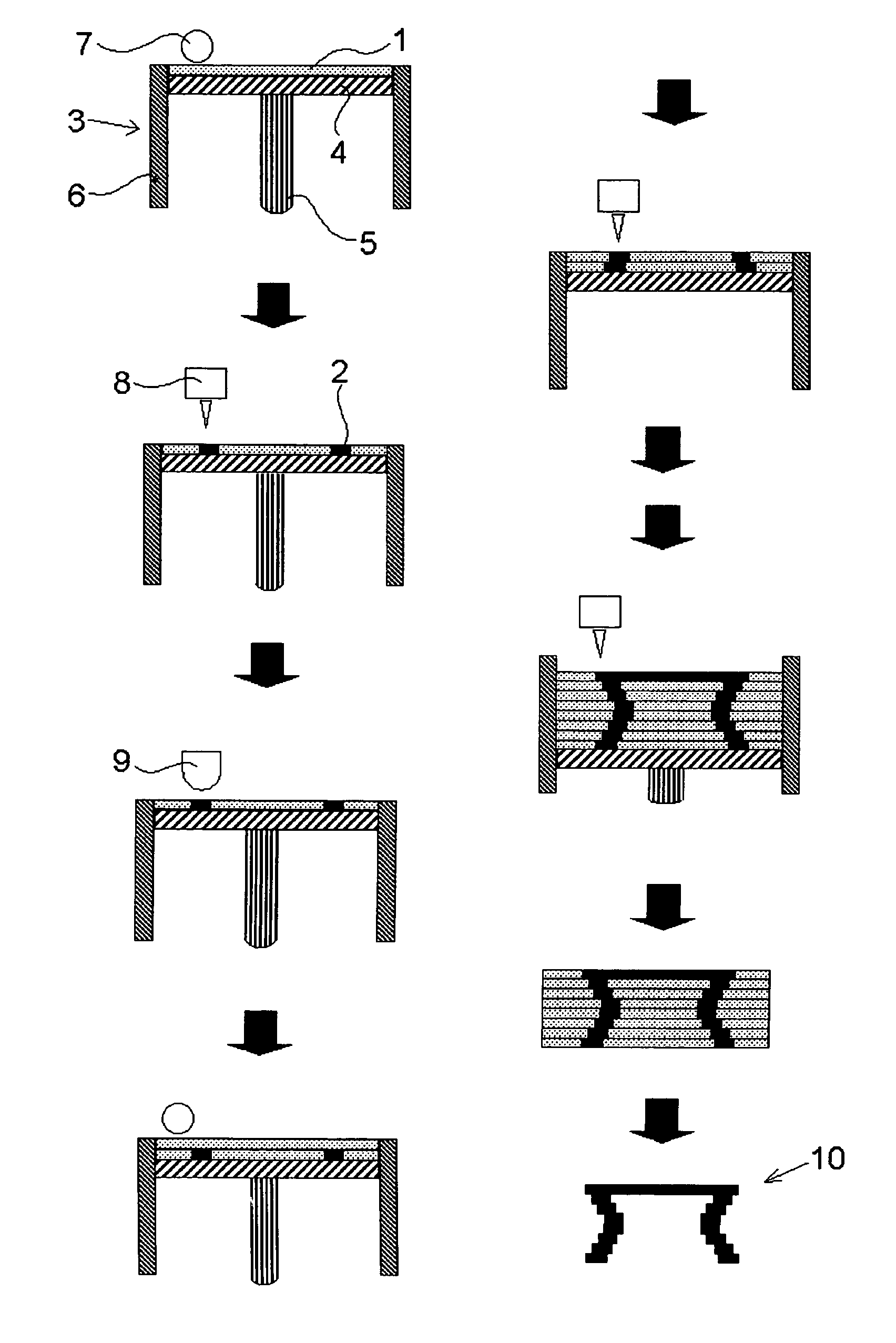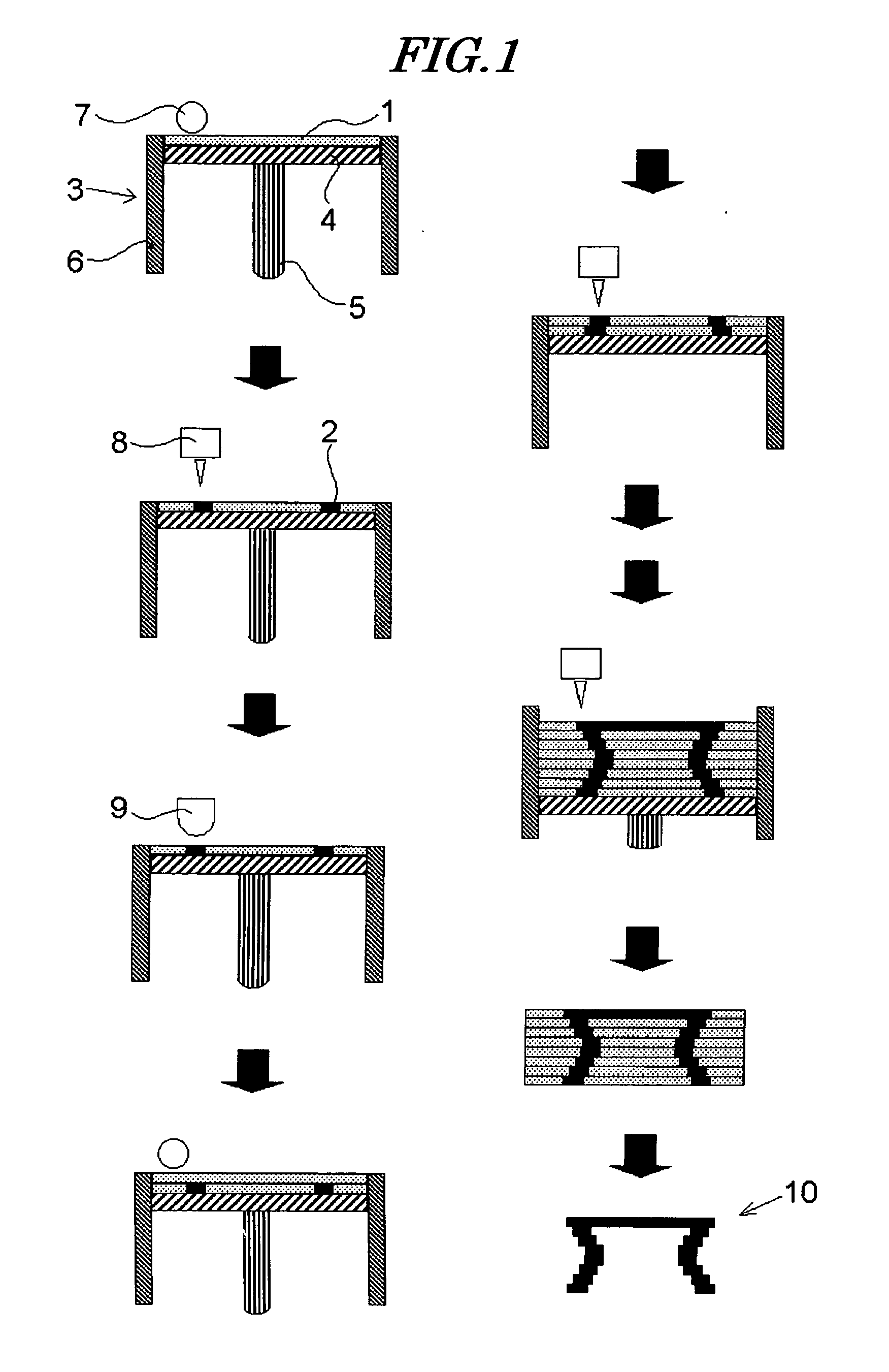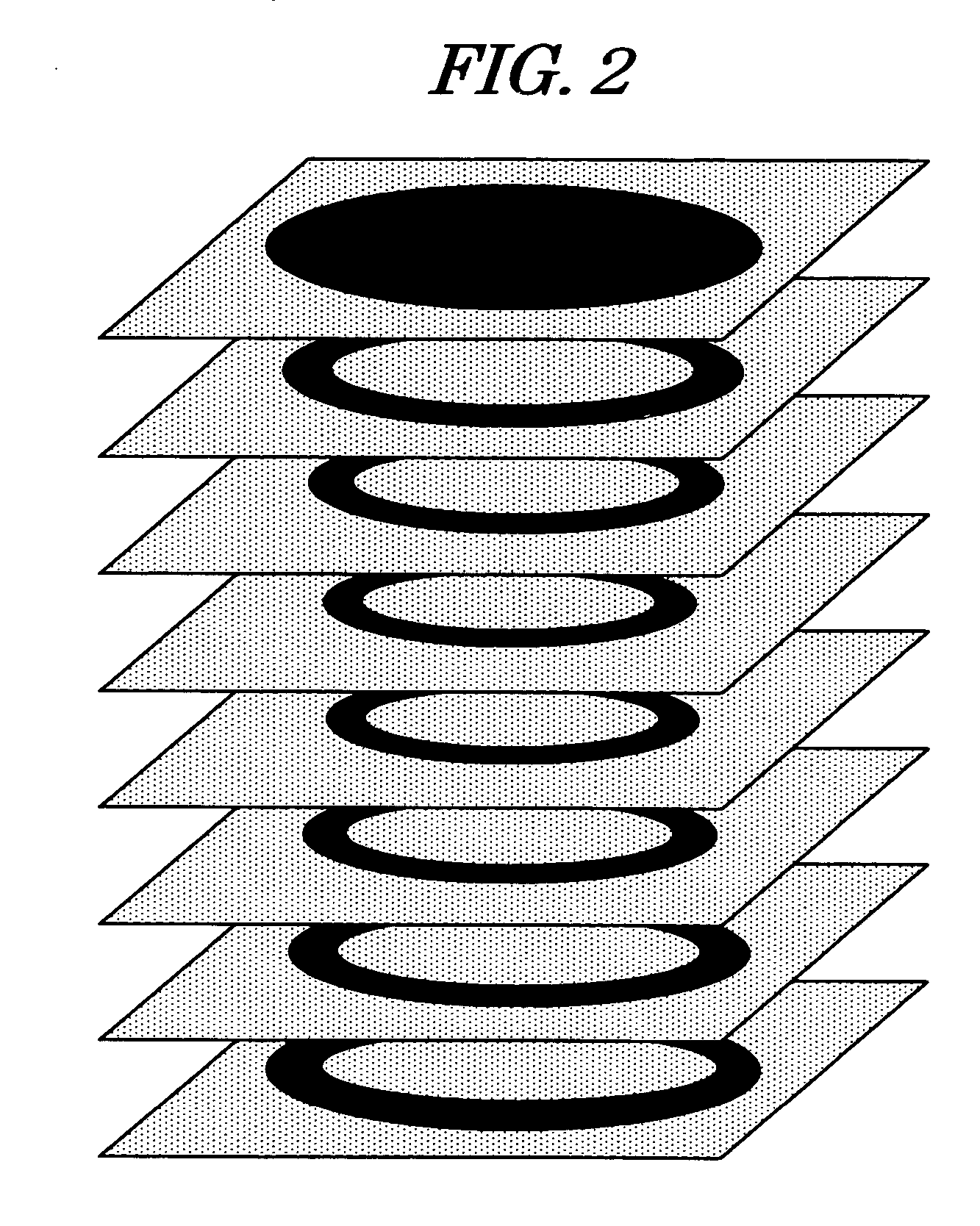Method of producting three-dimensional model
a three-dimensional model and product technology, applied in the direction of additive manufacturing processes, textiles and papermaking, additive manufacturing processes, etc., can solve the problems of time and expense, the method cannot achieve a satisfactory level of properties (texture, color) for a model, and the three-dimensional model for which transparency is required cannot be obtained by the conventional method, etc., to achieve good discharge properties and excellent curability
- Summary
- Abstract
- Description
- Claims
- Application Information
AI Technical Summary
Benefits of technology
Problems solved by technology
Method used
Image
Examples
example 1-1
[0305]
Preparation of UV-curing binder ‘colorless binder’Polymerizable compound: KAYARAD DPCA60 5.2 gPolymerizable compound: HDDA14.8 gPhotopolymerization initiator: 2-hydroxy-2- 0.6 gmethylpropiophenone
[0306] The above components were stirred and mixed to give a colorless transparent binder having a viscosity at 25° C. of about 20 mPa·s.
Preparation of UV-curing binder ‘white binder’Polymerizable compound: KAYARAD DPCA60 5.2 gPolymerizable compound: HDDA14.8 gPhotopolymerization initiator: 2-hydroxy-2- 0.6 gmethylpropiophenoneWhite pigment: titanium oxide 3 g
[0307] The above components were kneaded using a three roll mill to give a white binder having a viscosity at 25° C. of about 25 mPa·s.
Preparation of UV-curing binder ‘yellow binder’Polymerizable compound: KAYARAD DPCA60 5.2 gPolymerizable compound: HDDA14.8 gPhotopolymerization initiator: 1-hydroxycyclohexyl 0.5 gphenyl ketoneColorant: Y-1 0.8 g
[0308] Y-1 above, and M-1 and C-1 below were as described in the ‘Disclosure of ...
example 1-2
[0315] A three-dimensional model was formed in the same manner as in Example 1 and evaluated except that
Polymerizable compound: ethoxylated pentaerythritol 8.4 g andtetraacrylatePolymerizable compound: HDDA11.6 gwere used instead ofPolymerizable compound: KAYARAD DPCA60 5.2 g andPolymerizable compound: HDDA14.8 g.
example 1-3
[0316] A three-dimensional model was formed in the same manner as in Example 1 and evaluated except that
Polymerizable compound: M35010.0 g andPolymerizable compound: IBOA10.0 gwere used instead ofPolymerizable compound: KAYARAD DPCA60 5.2 g andPolymerizable compound: HDDA14.8 g.
PUM
| Property | Measurement | Unit |
|---|---|---|
| Temperature | aaaaa | aaaaa |
| Shrinkage | aaaaa | aaaaa |
| Electric potential / voltage | aaaaa | aaaaa |
Abstract
Description
Claims
Application Information
 Login to View More
Login to View More - R&D
- Intellectual Property
- Life Sciences
- Materials
- Tech Scout
- Unparalleled Data Quality
- Higher Quality Content
- 60% Fewer Hallucinations
Browse by: Latest US Patents, China's latest patents, Technical Efficacy Thesaurus, Application Domain, Technology Topic, Popular Technical Reports.
© 2025 PatSnap. All rights reserved.Legal|Privacy policy|Modern Slavery Act Transparency Statement|Sitemap|About US| Contact US: help@patsnap.com



